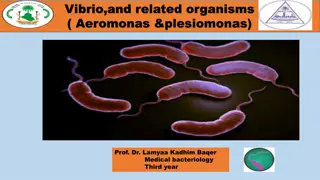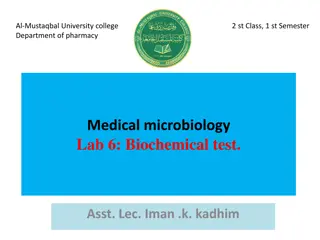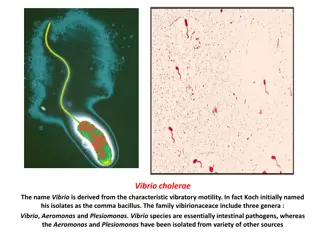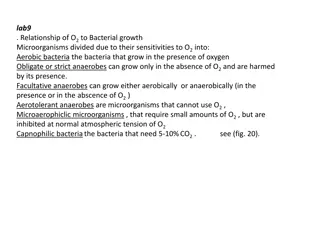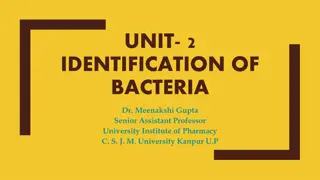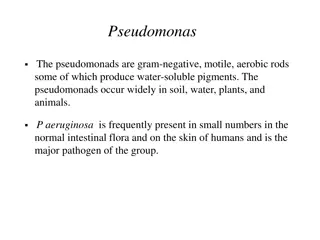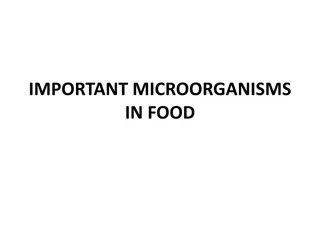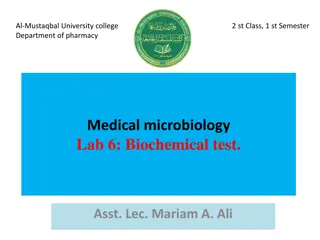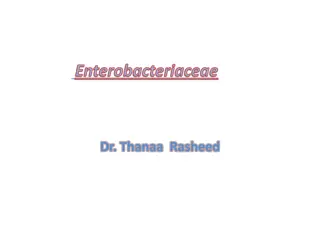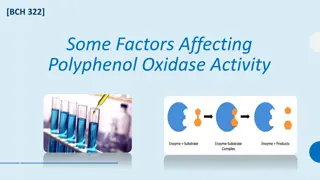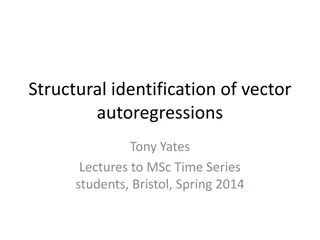Oxidase Test for Bacteria Identification
This test is used to identify bacteria based on their oxidase activity. It involves a biochemical reaction that changes the color of a dye, allowing for easy differentiation of oxidase-positive and oxidase-negative organisms. The test principle, procedure, interpretation, and a list of oxidase-positive and -negative organisms are provided in detail.
Uploaded on Apr 16, 2025 | 1 Views
Download Presentation

Please find below an Image/Link to download the presentation.
The content on the website is provided AS IS for your information and personal use only. It may not be sold, licensed, or shared on other websites without obtaining consent from the author.If you encounter any issues during the download, it is possible that the publisher has removed the file from their server.
You are allowed to download the files provided on this website for personal or commercial use, subject to the condition that they are used lawfully. All files are the property of their respective owners.
The content on the website is provided AS IS for your information and personal use only. It may not be sold, licensed, or shared on other websites without obtaining consent from the author.
E N D
Presentation Transcript
TIU - Faculty of Science Medical Analysis Department Microbiology Heshu J. Ahmed/Assist. Lecturer _____________________________________________ Oxidase Test 2nd Stage /2nd Semester Heshu.jalal@tiu.edu.iq https://tiu.edu.iq/ 2020 - 2021
INTRODUCTION; It is a biochemical test Used for the identification of bacteria
PRINCIPLE: Cytochromes are the iron containing hemoproteins . Cytochrome system is seen in aerobic, microaerophilic and facultive anaerobic organisms.
IN REDUCED STATE DYE COLOURLESS IN OXIDISED STATE DYE PURPLE BLUE
PLATE METHOD Cultures are made on a suitable solid growth medium A freshly prepared 1% solution of tetramethyl-p- phenylene-diamine dihydrochloride (TMPDD) is poured on to the plate so as to cover the surface, and is then decanted. The colonies of oxidase positive organisms rapidly develop purple colour.
INTERPRETATION: Oxidase postive: purple blue colour Oxidase positive 5 to 10 sec Delayed positive 10 to 60 sec negative > 60 sec
OXIDASE POSITIVE ORGANISMS: Pseudomonas Neisseria Vibrio Campylobacter Aeromonas Alcaligenes Brucella Pasturella Eikenella Kingella Moraxella Legionella Helicobacter Chromobacter (oxidase variable)
OXIDASE NEGATIVE All enterobacteriaceae are OXIDASE NEGATIVE Acinetobacter Staphylococci streptococci
Thanks for your attention Heshu.jalal@tiu.edu.iq



